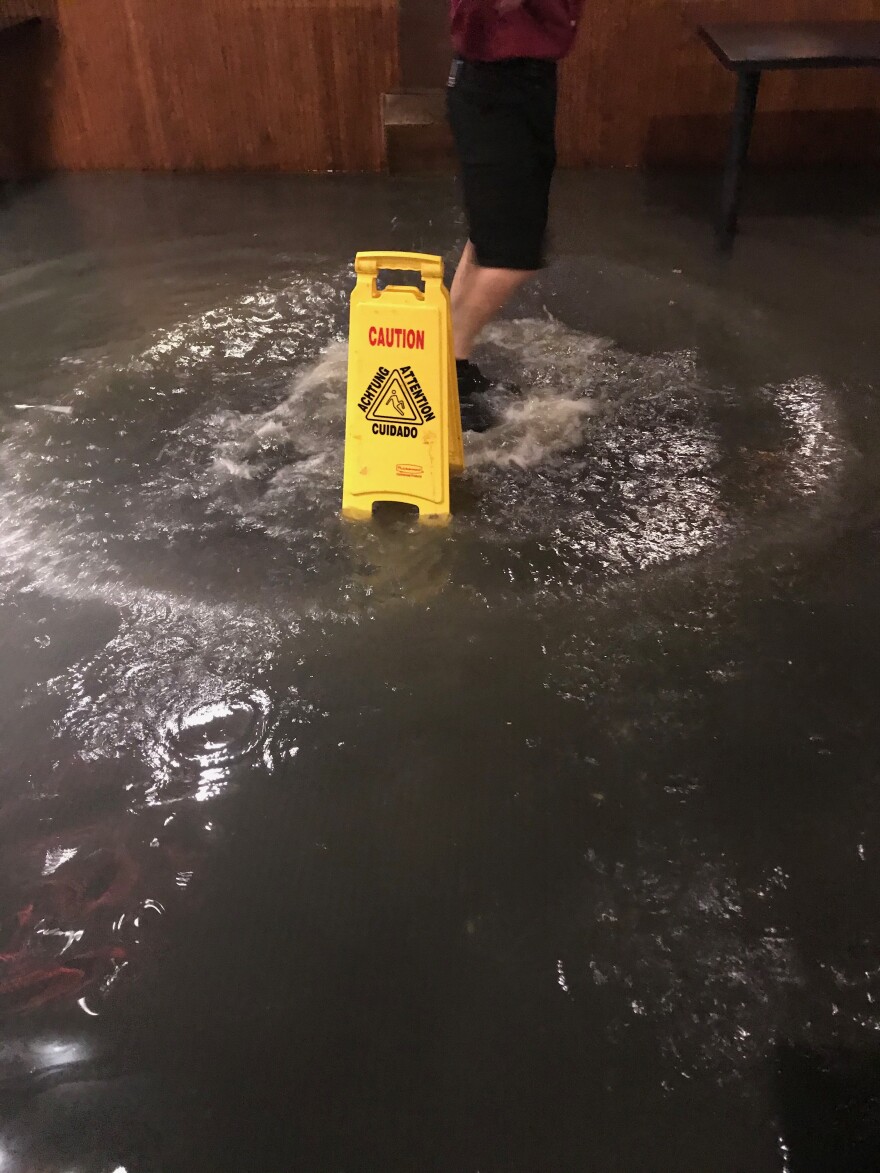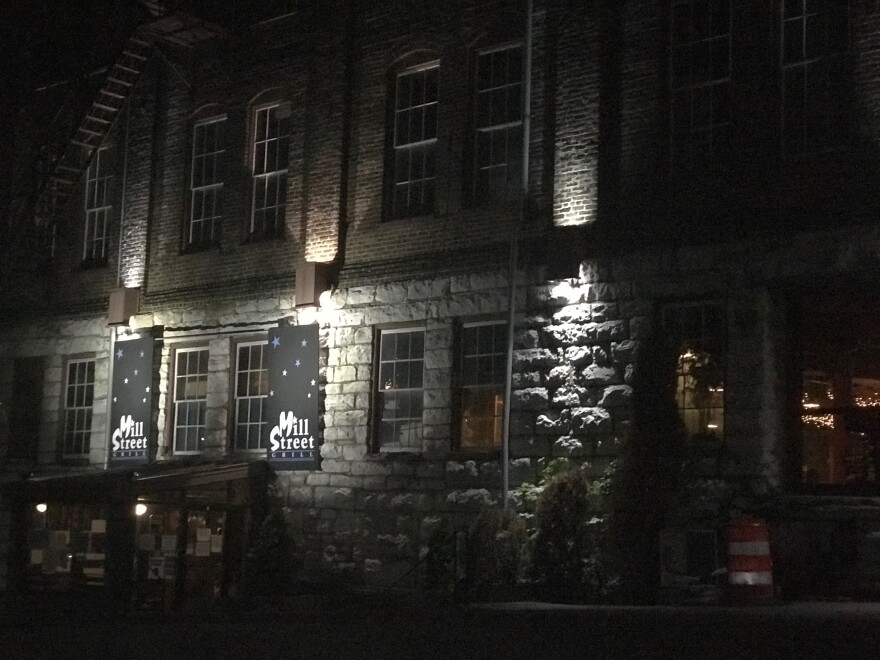Virginia’s changing climate has created a flooding problem, and not just on the coast.
In August, homeowners and small businesses in the Shenandoah Valley were hit with not one but two floods. In smaller communities, federal aid is not easy to get.
The storm came at the end of the first week of August on a Saturday night. Its strength surprised residents of the city of Staunton. Stalled by nearby mountains, the storm dumped rain for two hours. "Which created literal rivers running through downtown Staunton," Debbie Irwin remembers. "A lot of our business and homes had two to five feet of standing water in them, which decimated a lot of the businesses."
Irwin is executive director of the Staunton Creative Community Fund, which set up a GoFundMe account the next day to help small businesses recover. Despite the pandemic, volunteers came out in force to shovel out mud and clean up debris. "Volunteers are out there for eight to ten hours on the Sunday after the flood happened and to say, 'You know what that’s fine, if you need me to wear a mask, I’ll wear a mask.' Willing to do whatever it takes to get these businesses back up and running."
Click here for historical flood gauge data for the Middle River in Augusta County
It was the second storm, two weeks later, that got Terry Holmes’ Mill Street Grill restaurant. "We knew it was coming but I didn’t think, since I didn’t flood very much the first time, I would flood this time and boy was I wrong. I mean I literally I had to ask customers to box their food up and leave because the water came in that fast," Holmes says. It flowed up through the restaurant floor from a creek the historic mill is built on.

Flooding here comes from overflowing creeks and stressed stormwater systems, and from underground through waterworn porous rock known as karst topography. It comes up fast then recedes like a stopped up tub, leaving behind mud and water damage. Businesses here have metal barricades to stop the water, similar to plywood used by coastal businesses to protect property during a storm. But the first storm came too fast, no one could prepare. The two storms damaged 164 properties totaling more than $3 million.
Rebecca Joyce is with the Central Shenandoah Planning District Commission. She says small communities like Staunton often don’t make the state or FEMA threshold to qualify for disaster aid. "Lately, that’s what I have been doing more, is working with homeowners, it seems like I’ve been trying to help them navigate a system where they don’t qualify for any assistance because it’s been very severe to their home but not big enough like a Katrina or an Isabel where we would have any kind of federal public assistance or individual assistance. That’s where climate change is headed for us I think.
Click here for historical streamflow data for Virginia
So some storm victims set up GoFundMe pages. Irwin’s community fund so far has raised $139,000. Before the 2008 recession, Joyce said people had the cost share needed by a FEMA grant to elevate or move their home. Others sold their home in a buyout program. With more frequent flooding, some are thinking about it again. "It’s starting to tap on people’s shoulders," she says.
Smaller localities with few resources will ask their Planning District Commission to oversee the grant process for them. The commission also helps with mitigation and just updated its regional 5-year hazard mitigation plan to help vulnerable places like Staunton. Meanwhile, Staunton is looking at how to fund fixes to it’s stormwater system that will cost tens of millions of dollars. Terry Holmes has lived here for 28 years and visited since he was a little boy. Would he move? "I love it here. I don’t know how well I would thrive," Holmes says.
For some, a FEMA grant allowed them to stay. "We can’t control nature but there’s so many things we can do to protect ourselves," Rebecca Joyce says. "And I have to say, the people who have participated in mitigation with their houses, it’s been such a relief for them. They’re always so grateful. I had one man, we had moved his house and it was out of the flood plain and he sent me a note and it just said, he was so grateful and now he could actually sit out on the porch and listen to the rain and not worry."
In our next report, we look at FEMA, which plans to raise flood insurance premiums next year.
This report, provided by Virginia Public Radio, was made possible with support from the Virginia Education Association.



